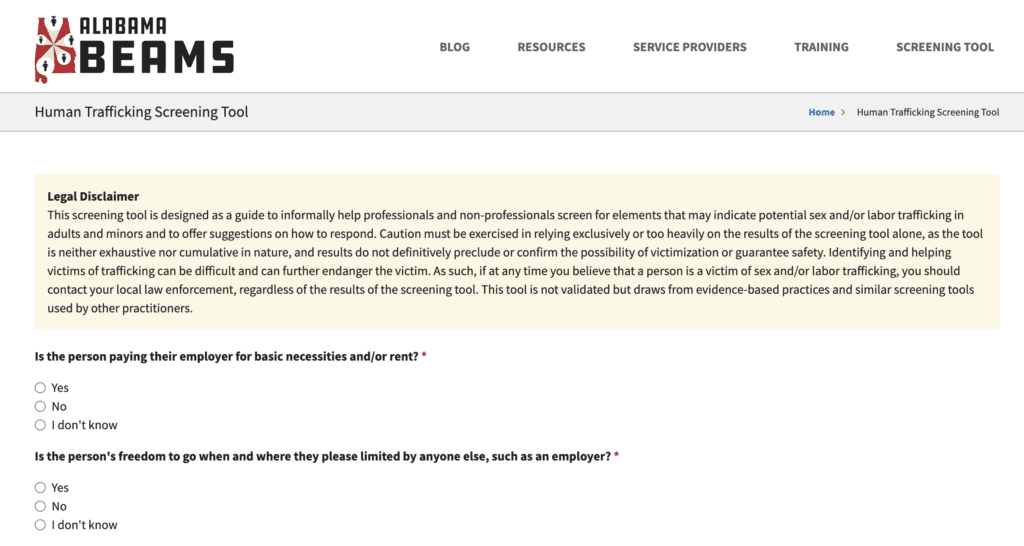Screening & Identification
Indicators of human trafficking, exploitation and CSAM vary, and there are several types of tools utilized to identify and assess suspected and confirmed victims. Agencies can determine what tools they want to implement for ongoing identification, screening and assessment. North Dakota relies on the Alabama BEAMS Screening Tool for sex and labor trafficking identification of child/adolescents and adults. This tool is supported by the NDHTTF and is the encouraged tool for use in the state.

Below is how the NDHTTF defines each of these tools:
Identification tools are typically checklists of potential red flags and risk factors associated with a suspected human trafficking victim. These checklists are quick and can be done mostly through observation and historical information regarding a potential victim. North Dakota relies on the Alabama Beams Screening Tool for sex and labor trafficking identification of child/adolescents and adults. This tool is supported by the North Dakota Human Trafficking Task Force and is the encouraged tool for use in the state.
https://beamsal.com/assessment/
Once it is determined that a suspected victim has been identified using the Alabama Beams Screening Tool, agencies can determine if screening is the next step in recognizing individuals with indicators of trafficking. Screening helps to determine if suspected individuals meet qualifications to obtain programmatic services. Screening includes a short questionnaire regarding their victimization, and should be followed by a comprehensive assessment if victims opt into services. Screening is completed to understand the full scope of the needs and circumstances experienced by that potential victim. Screening is completed per victim’s consent and at their pace. Screening and assessment completion is determined by victims and their comfort and readiness to disclose the information. Services are not declined to victims who are not ready to disclose this information.
In Steven Hassan’s research on cults, he published four types of control seen within the dynamics of human trafficking. These areas of control can also serve as a tool to identify potential human trafficking.
Steven Hassan’s BITE Model of Authoritarian Control – Freedom of Mind Resource Center
An assessment is a comprehensive evaluation of a victim’s strengths, needs, and experiences. The results are utilized to inform treatment and programmatic needs, level of safety/risk, mental health needs, MDT planning and discussion, and/or other interventions and supports.
National Human Trafficking Resource Center (NHTRC) is a validated tool supported by North Dakota.
The Polaris Project in partnership with NHTRC have a downloadable tool for the assessment of victims and survivors:
Comprehensive Human Trafficking Assessment Tool | National Human Trafficking Hotline
